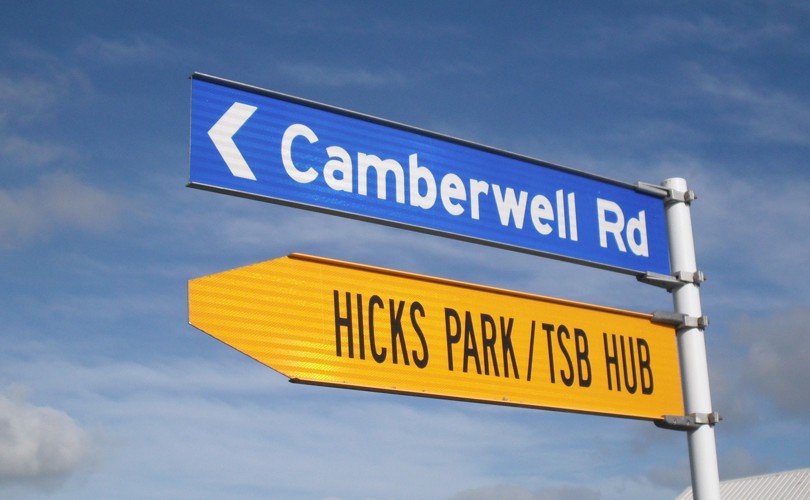 Camberwell Road sign. Mike Gooch. Word on the Street image collection.
Camberwell Road sign. Mike Gooch. Word on the Street image collection.
 Camberwell Road sign. Mike Gooch. Word on the Street image collection.
Camberwell Road sign. Mike Gooch. Word on the Street image collection.
How Camberwell Road got its name is uncertain today. The best guess is an early settler in the area came from the suburb of Camberwell in London.
It hasn’t always been named Camberwell Road. Before the 1930s, Vogel Street extended north to Surrey Street, dividing King Edward Park and Bayly Park. During the late 1930s, the piece of road was given its Camberwell name.
North of the Surrey Street intersection, the road was sub-divided for housing from the early 1900s. South of the intersection was very different. When it was known as Vogel Street, a recreation reserve was surveyed as early as the 1870s. It later became King Edward Park. Cricket enthusiasts reportedly “kept it in very fair order”. That is, until council denied cricket sole tenancy. Soon public access, including grazing horses, meant maintaining a sports ground became impossible.
On the other side of the street was undeveloped land owned by George Bayly, a prominent cricket identity. He wanted to help all the sporting codes. In the late 1890s, the Bayly Park Company was formed and the land was developed for cricket and football. Soon, tennis courts and a cycling track were also laid down. It was regarded as Hāwera’s “home for all sports”. However it proved costly to administer and one by one the sports left. At the outbreak of World War One, only cricket was played there. Later, the pavilion was removed and Bayly Park became part of the new Hāwera High School.
There were several houses built on Bayly Park, facing Camberwell Road, after the war. Located opposite the high school, they were probably owned by the Education Department and leased to teachers. Sometime in the late 1960s or soon after, these houses were removed.
This story was originally published in the Taranaki Daily News.
Please do not reproduce these images without permission from Puke Ariki.
Contact us for more information or you can order images online here.